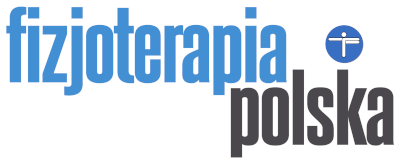Wpływ stresu prenatalnego na rozwój motoryczny niemowląt
Martyna Franecka, Małgorzata Domagalska-Szopa, Andrzej Szopa
Martyna Franecka, Małgorzata Domagalska-Szopa, Andrzej Szopa –Effects of prenatal stress on infant motor development. Fizjoterapia Polska 2023; 23(5); 327-338
DOI: https://doi.org/10.56984/8ZG20BiRS
Streszczenie
Wprowadzenie. Badanie miało na celu ustalenie związku pomiędzy doświadczanym przez kobiety stresem w czasie ciąży (prenatal maternal stress; PMS) oraz czynnikami ryzyka okołoporodowego a rozwojem motorycznym niemowląt, ocenianym skalą Alberta Infant Motor Scale (AIMS).
Cel pracy. Postawiono hipotezę, że niemowlęta, których matki doświadczyły PMS, osiągają niższy poziom rozwoju motorycznego w pierwszym roku życia w porównaniu z niemowlętami matek, które nie doświadczyły PMS.
Materiał i metodyka. Przebadano 171 kobiet oraz 179 ich dzieci. Badane podzielono na dwie grupy: 1) matki, które doświadczały PMS oraz 2) matki, które nie doświadczały PMS. Taki sam klucz zastosowano, dzieląc badane niemowlęta na dwie podgrupy: 1) niemowlęta kobiet doświadczających PMS oraz 2) niemowlęta kobiet niedoświadczających PMS. Każde niemowlę zostało ocenione przy użyciu standaryzowanego narzędzia AIMS.
Wyniki. Wyniki badania sugerują, iż niemowlęta matek doświadczających PMS osiągają niższe wyniki w ocenie neurorozwojowej, utrzymujące się co najmniej 12 miesięcy od urodzenia niż niemowlęta matek niedoświadczających PMS. Ponadto wykazano związek pomiędzy stresem w ciąży a wiekiem ciążowym, rodzajem porodu, urodzeniową masą ciała oraz punktacją Apgar.
Wnioski. Stres doświadczany przez matki w trakcie ciąży może wpłynąć na rozwój motoryczny w okresie niemowlęcym. Nie pozostaje również bez znaczenia dla czynników okołoporodowych, takich jak tydzień i rodzaj porodu, urodzeniowa masa ciała, punktacja Apgar.
Słowa kluczowe:
stres w czasie ciąży, rozwój motoryczny niemowląt
| Pobierz/Download/下載/Cкачиваете | Pobierz bezpłatnie artykuł w j. angielskim |

